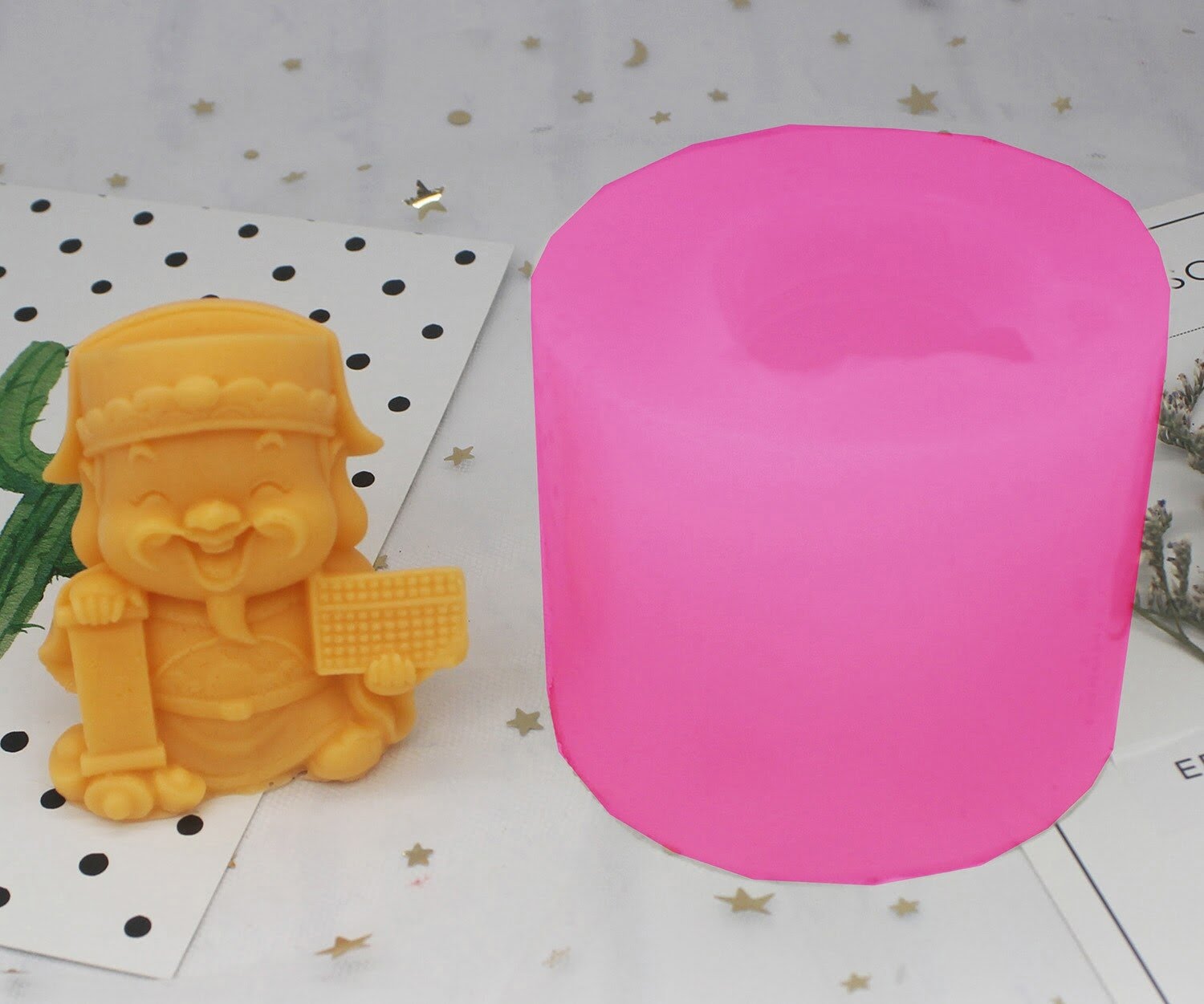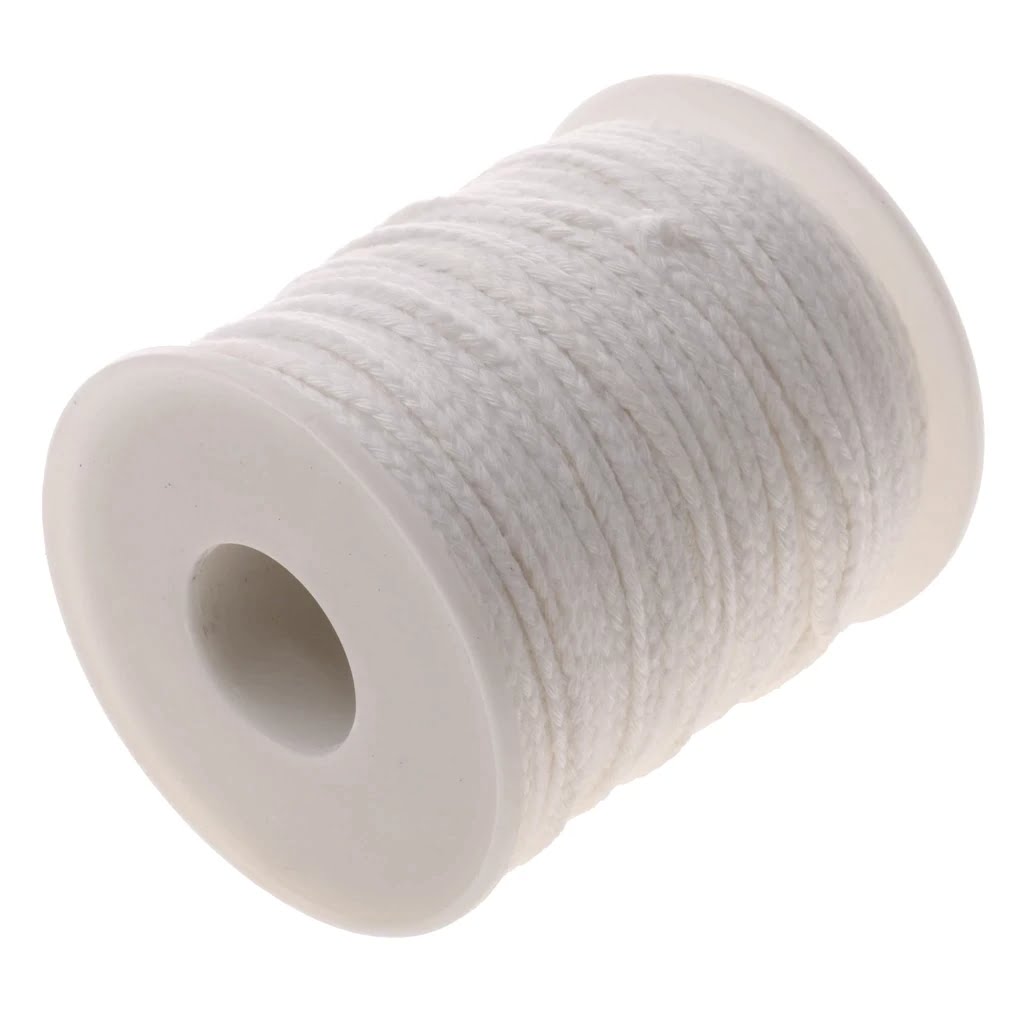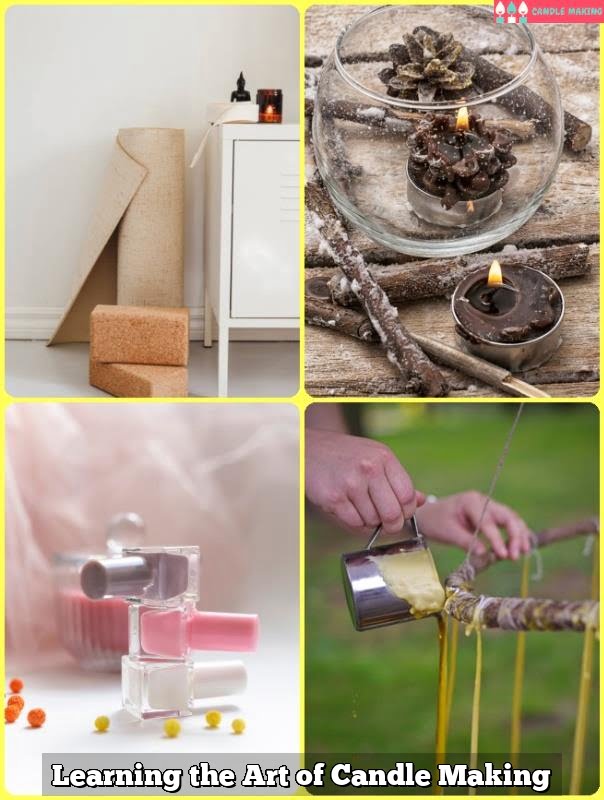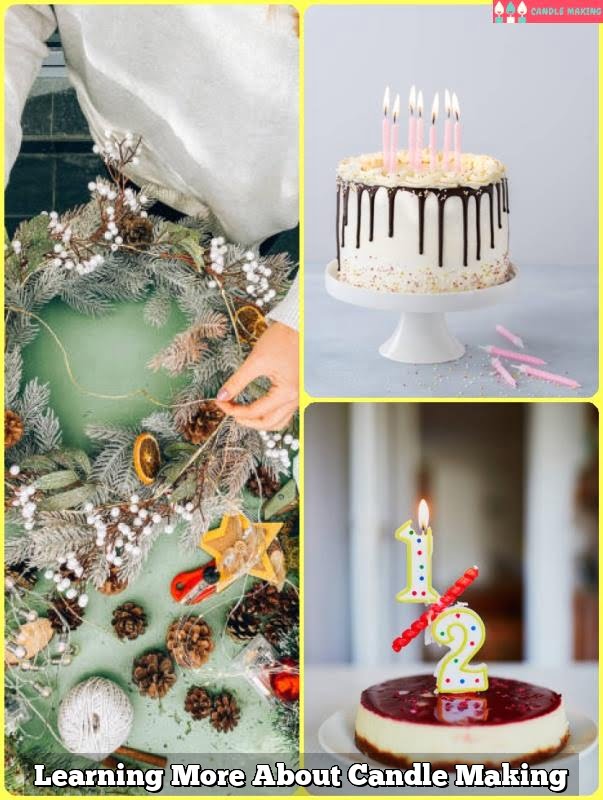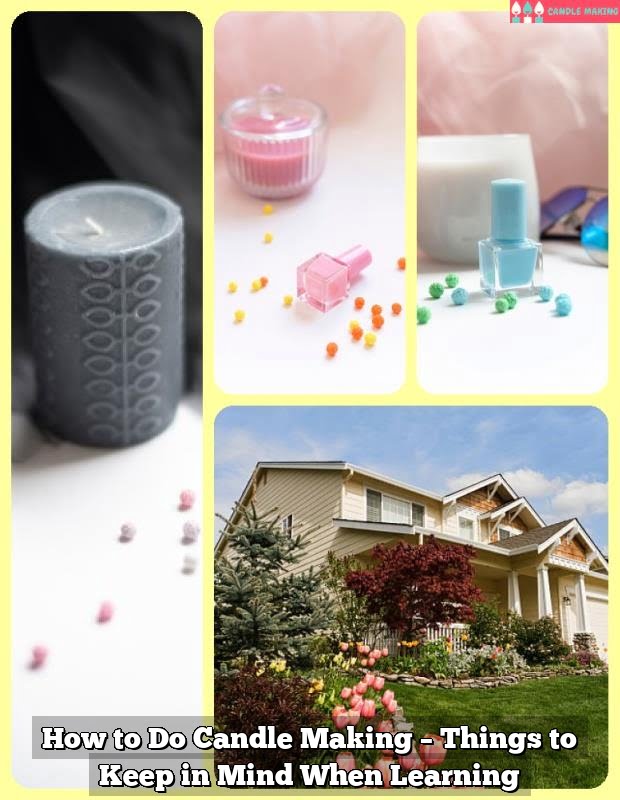Introduction
Learning how to make candles is an interesting and rewarding hobby. It can be relaxing, therapeutic and very enjoyable. Being able to create custom candles gives a sense of satisfaction in creating something beautiful by hand. By learning candle making techniques, enthusiasts are also able to save money compared to buying candles which can be quite expensive at times.
Candle making requires knowledge of the different types of waxes, tools, dyes and fragrances available on the market. When starting this hobby, it is essential to get familiar with these ingredients before purchasing them. There is a range of scents such as lavender or rose that give off pleasant aromas when burning, while colours can really bring out texture and would make an eye-catching display piece. Utensils vary depending on the type of candle being made so it’s important that each one serves a purpose in order for everything to run smoothly during production.
Once all the supplies have been gathered and safety precautions taken into consideration, now it’s time to experiment with some basic beginner candling techniques such as pouring the wax into containers or moulds. Since wax is molten at high temperatures, proper care should be taken when transferring it from one place to another in order not burn surfaces or even oneself! Other steps may include adding fragrance oils along with colouring dye if desired before letting the wax harden for several hours until all necessary procedures are completed and the candle can be lit up for test burning purposes.
From here onwards there are many advanced techniques possible such as layering multiple colours together or using embellishments like glitter and dried flowers which add character makes your creation truly unique. You will gain more knowledge through trial and error but with persistence and dedication, surely you’ll become a master of this craft too!
Getting Started
Candle making is an enjoyable and surprisingly easy craft to learn. By gathering the essential materials, supplies and tools needed to make a candle from scratch, beginners can start to create beautiful candles in no time.
Essential materials: The main materials you will need for making candles are wax, a wick, a container or mould and fragrance oils (optional). The type of wax you use will largely depend on the look and feel of the finished candle ” beeswax gives a more expensive but natural look while soy wax produces softer looking candles. You can find wicks online, at craft stores and some hardware stores. Containers or molds may be plastic or metal and come in various sizes and styles, depending on the shape of candle that you wish to make. Depending upon your chosen fragrance oil, additional materials such as dyes may be required for colour.
Supplies: You will require some supplies to make your own candles safely. Firstly, you will need safety equipment such as goggles, long sleeves and heat-resistant gloves to protect yourself from hot wax spills (it is advisable not to wear any jewellery or loose items of clothing in case they get burnt). Secondly, you will need tools such as double-boiler pots or pans that can safely melt your wax without burning it; stirrers (wooden chopsticks work well) for stirring; thermometers so that the correct temperature can be maintained when melting wax; scissor pliers for trimming the wick; a glue gun for affixing the base of the wicks in place; and scissors for cutting away excess wax later on.
Instructions: The following is an example of how you could go about making a basic container candle:
1) Prepare all supplies listed above, ensuring that all surfaces needed are covered with newspaper or other protective material
2) Measure out your chosen amount of wax then carefully melt it using double-boiler pots until it reaches approximately 130 degrees Fahrenheit
3) Use scissor pliers to trim ¼ inch off the base of one end of the wick before attaching it with a glue gun at the bottom center point in your containers/molds
4) Let wax cool slightly before adding your desired dye drops (if using any) plus 10 drops per ounce of fragrance oil
5) Once everything has been stirred together properly pour melted wax into containers/molds gradually so that there are no air bubbles
6) Once fully cooled, cut away any excess wax around edges and voila! Your new candle is ready!
Candle Fragrance
When it comes to making your own candles, choosing the right fragrance can help you create a unique scent that is personal and inviting. Similarly, if you are making candles for others as gifts or for sale, the fragrance of your candle will largely determine its success. With this in mind, it’s important to select a fragrance that is appropriate and appealing. Fragrances can be divided into two basic categories: synthetic fragrances and natural fragrances. Synthetic fragrances are chemical-based and often have pronounced aromas associated with them, while natural fragrances are derived from essential oils or food-grade ingredients such as spices or extracts.
Beneficial essential oils are derived directly from plant sources and make extraordinarily good additions to a candle’s wax blend because they provide both flavor and aroma. It’s important to make sure that these types of oils only come from trusted suppliers who responsibly source their products from ethical farmers within the industry”otherwise, you may end up using harmful chemicals in your candle blends. Some of the most popular essential oils commonly used in candles include lavender, lemon balm, orange essential oil, bergamot essential oil, cedarwood essential oil, patchouli essential oil, sandalwood essential oil, and rosemary essential oil.
Natural additives such as herbs can also be added to enhance the flavor profile of the scent of your candles. In order to get maximum efficiency from your additives while still preserving their natural qualities they should be added at a low temperature so as not to degrade any beneficial compounds present in them. For example; rosemary leaves steeped in hot water can add depth of scent to paraffin or soy wax mixtures. Honey can also be added as an emulsifier or thickening agent while adding a pleasant sweetness to the mix that many people enjoy when burning their candle creations.
Customizing Candles
Learning how to make candles is a great way to customize any space with a luxurious scent, warm glow, and personally designed shapes and sizes. Once you understand the basics of the craft, such as melting wax in a double boiler and dipping wicks in it, you can explore the world of candle making even further.
Staining the wax with pigmenting dyes allows you to choose any color imaginable – go bright and bold or opt for softer shades for a noir look. Adding organic ingredients into the melted wax is also possible; this works as an infusion and an enhancement of fragrances. Popular ingredients often include dried flowers like rose petals, herbs like lavender, spices like nutmeg, or citrus peels. You can even embed decorative elements like essential oils or botanicals in the wax while pouring it into molds to enhance visual displays while they’re burning! The options are truly endless. With practice and patience you’ll be creating masterpieces worthy of exhibition!
Finishing Touches
Once you have mastered the basics of candle making, you may want to start exploring some more advanced techniques like decorating. Decorating your candles can add the perfect finishing touch and personalize them for any occasion. A few options for decorating that you may want to try are using glitter, ribbons, beads, and other embellishments.
Glitter is a very versatile option that allows you to create almost any look imaginable. You can apply it by sprinkling it on the melted wax right after pouring or by applying glue or a sealant to your finished candles before adding the glitter – experimenting with different applications will help you achieve the best results for your project. Ribbon adds a luxurious texture to the outside of the candle along with an interesting texture or color pattern. Simply wrap around your candles before they dry and secure in place with hot glue or another adhesive. Beads also offer color and texture options; adding them requires adhering them directly with an epoxy or other strong binding agent as they cannot be attaching simply through melting wax alone like in other methods. Lastly, other embellishments such as rhinestones, charms, shells and feathers can be used for decoration as well if an option is available to securely attach them (likely through some kind of adhesive).
With these options plus many more creative ways to enhance your homemade candles ” there’s no limit to what distinctive pieces of art you can make!
Safe Burning and Storage
Burning candles should always be done in a safe environment and with proper care. Always burn your candles away from walls, curtains, furniture items, and any other flammable objects to avoid the risk of fire. When burning several candles at the same time, you should keep the wick length of each candle within 1/2 inch to avoid an overcrowded flame and excess smoke production. Candles should never be left unattended or left burning overnight. Make sure that all burning candles are placed on a sturdy surface as well as in containers with wide bases so they cannot easily tip over.
When it comes to long-term storage of candles, it’s important to find a safe place away from direct sunlight and heat sources while keeping them in closed cardboard boxes or closets if possible. The ideal temperature for long-term candle storage is between 40F and 70F (4C to 21C). This will ensure the shape, texture and color remains intact for when you go to use them. Additionally, make sure that the storage location has proper airflow since storage in airtight containers can cause mold growth on the candle wicks. If this happens you should discard your stored candles immediately.
Troubleshooting
One of the most common problems candle makers face is extinguishing. This happens when a candle has not been burned properly and the flameout denies it from burning correctly. To fix this issue, make sure that you are in a draft free area when lighting candles so that there isn’t any wind interference. You can also reposition the wick for more access to oxygen if needed and use tweezers or a skewer to shift the wick around and keep it near the surface of the wax.
Another common problem candle makers face is tunneling where an uneven pool of wax remains at the bottom of a container candle after burning. This usually suggests that you used too hot of a melt point wax and should switch to a lower melt point wax next time in order to slow down its rate of liquefaction. Additionally, you should be vigilantly trimming your wick between each burn session so that it doesn’t become too long or too close to the sides of your candle because this will also encourage tunneling behavior.
Where to Buy Candle Making Supplies
When it comes to learning candle making, having the right supplies on hand is essential. Without quality materials, you won’t be able to produce the high-quality candles that you’re hoping for. So, where do you start in locating all of the necessary items needed for your project? Here are some tips for finding quality candle making supplies and resources:
1. Start off by visiting local craft stores near you or online retailers for waxes, molds and other candle-making supplies. This will give you an idea of what’s available and allow you to compare prices between different vendors.
2. Ask around at hobby shops or search online manufacturers of traditional dipping waxes (often called beeswax) and container waxes (such as soy and paraffin). They often carry more specialty products than craft stores do and may be able to point you toward specific candle sources that fit your particular needs.
3. Investigate wick suppliers, too – they are vital to getting a good burn out of your finished product. Look for reputable companies that carry pre-tabbed wicks so that you can get a consistent size without having to measure strings yourself each time!
4. Check out websites devoted to candle making and other related topics; there is no shortage of online forums, blogs and message boards dedicated just to this subject. Spend some time reading through these sites when you first start out so that you can learn from experts who have already walked the path before you.
5. Don’t forget about tools! Look for tools specifically designed for use with wax such as double boilers, thermometers, pouring pots, chilled wick clamps etc., which will make production much easier on large batches of candles or containers with intricate patterns in them .
Conclusion
Learning how to make candles at home is a great way to enjoy the fragrant aromas and beautiful decorations of candles without the mass-manufactured prices. Making your own candles can provide countless hours of crafting and relaxation while still saving money. With patience, skill, and creativity, you can craft the perfect candle any time! Not only will this help reduce cost but it can also become a fun and rewarding hobby or even extra income if you decide to pursue candle making professionally or as a side job. Beyond that, it even provides a way to express yourself visually through color choices and scents. The possibilities are really endless with candle making! Combined with all of the other benefits discussed here, there is no doubt that learning how to make candles at home is one of the most enjoyable and beneficial hobbies you can have.

Welcome to my candle making blog! In this blog, I will be sharing my tips and tricks for making candles. I will also be sharing some of my favorite recipes.

